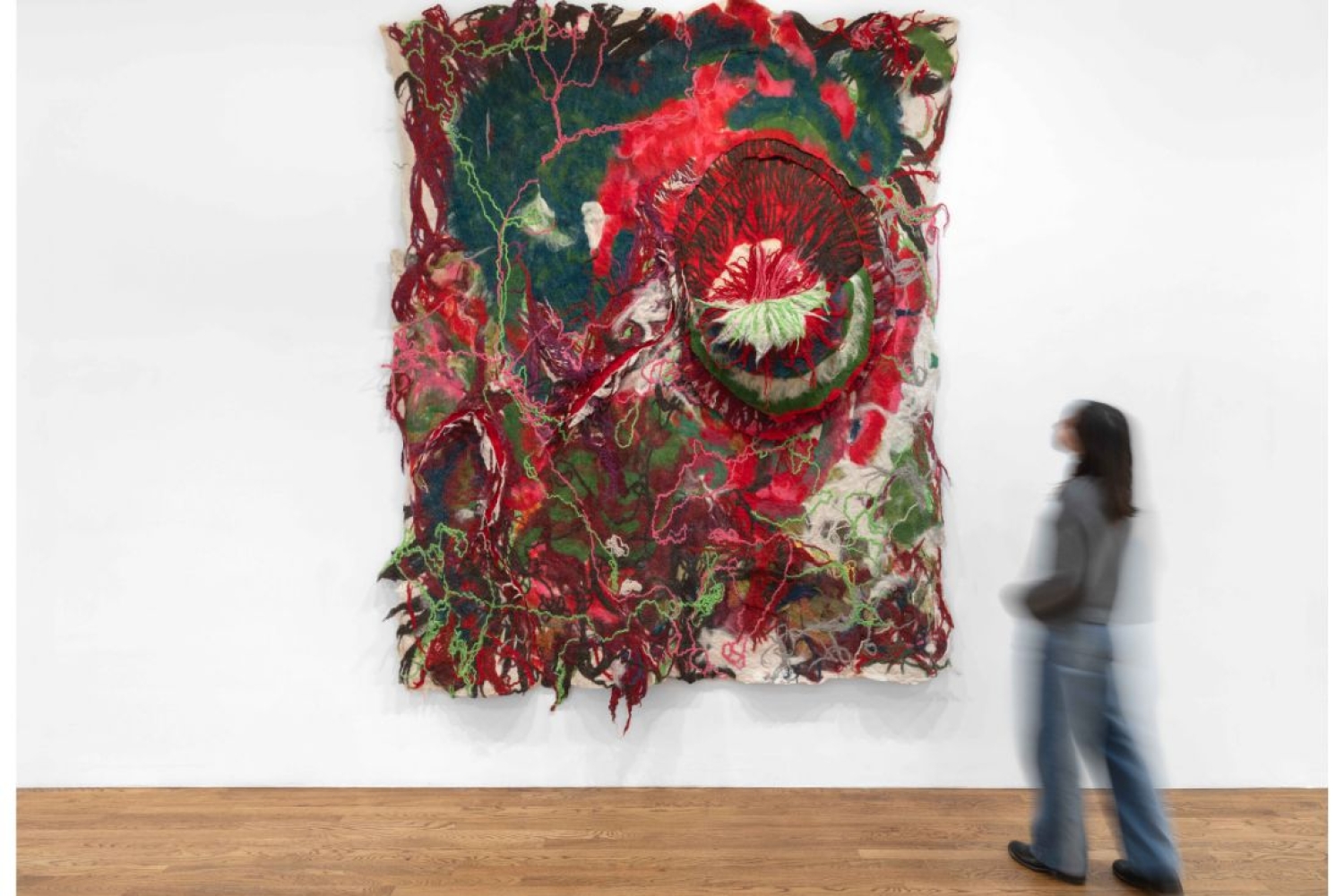

Nature Morte presents an exhibition of works by New York-based Indian artist Sagarika Sundaram. This is the artist's first solo show in India and only her second solo show to date, having premiered her works at the Palo Gallery in New York in 2023. A major work commissioned for the UBS Lounge was just displayed at Art Basel Miami Beach in December. Her next solo show is scheduled for the Alison Jacques Gallery in London in October 2025.
The title of the exhibition refers to the artist's interest in the connections between music and abstraction. Sagarika's approach to constructing her works and her use of color in them are both intuitive and improvisatory, resulting in works that ebb and flow over time, much like a piece of music.
While she works with a range of textiles, Sagarika's primary material is felt, which she makes by hand and dyes herself. The dynamic process, during which rolls of raw wool fiber are transformed into monumental sculptures in the hands of the artist, is almost theatrical. After laying the raw material on the ground in the form of a wooly, mesh-like membrane, she uses soap and water to transform it into a single piece of material, building the layers from the backside. The face of the work reveals itself only when she flips it over and she then cuts open the piece to reveal the layers within. Sagarika executes this with surgical precision to expose the unknown and unexpected that result from her labour-intensive process.
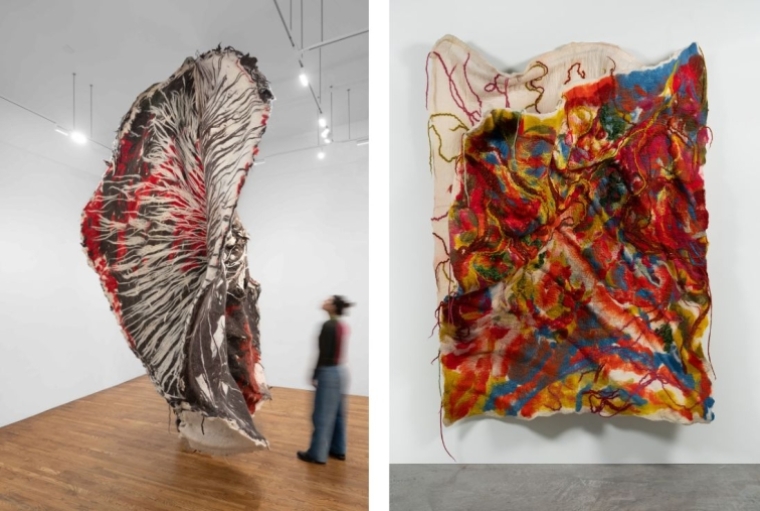
Source (2023) Hand-dyed wool, wire (left) | Mother of Pearl, 2024 Hand-dyed wool, wire (right)
The anatomical nature of her works, at times, appear to allude to the hemp sculptures of legendary Indian artist Mrinalini Mukherjee. Like Mukherjee, Sagarika’s works celebrate the process of birth and growth. Included in her show at the Palo Gallery in New York was the major work entitled "Source." Now in the collection of the Kiran Nadar Museum in New Delhi, the sculpture, a large-scale three-dimensional circular work suspended from the ceiling, will be the centerpiece of the Nature Morte show. Other wall works of various scales will be included in the exhibition. Sagarika, however, is as curious about the process as she is in the beginnings and the endings of a work. Perhaps, even more so: “There’s a moment at the start where I throw certain colours down, or throw fiber down with an energy that guides the way the rest of the composition unfolds. But I never really know what the final composition is going to look like until layers are open and interact with each other,” says the artist. The works participate equally in the histories of both abstract painting and sculpture.
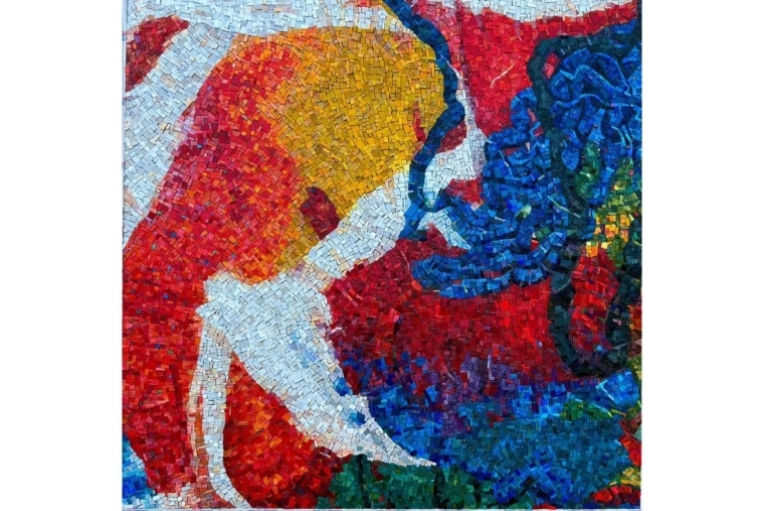
Inflection (2024): Italian glass mosaics
Also featured in the show will be four new wall pieces made in glass mosaics, a new medium for the artist, which have patterns akin to the batik technique, popular in South-East Asia. Sagarika’s relationship to Batik goes back to her days studying at the Rishi Valley School in Andhra Pradesh, where her professors, many of whom were from Shantiniketan, taught her the wax resist cloth painting technique. Her backwards approach to creating the felt works, in fact, has its origins in her training in batik, “where the image slowly appears in reverse”.
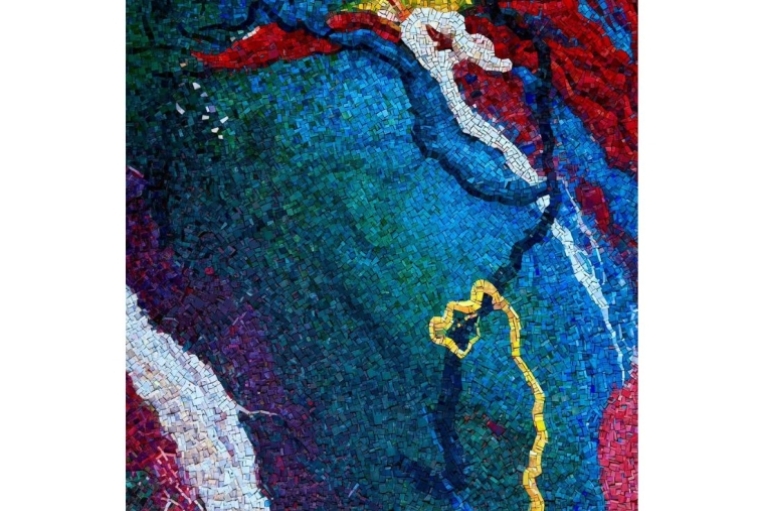
Nocturne (2024): Italian glass mosaics
Note by Peter Nagy
The human psyche craves balance in the stimuli that it experiences and this can often result in the aesthetic choices an individual will make. A fashion designer, working with the human figure all day, may crave purely abstract artworks during leisure time. As our lives have become increasingly digitized in the past decade, our collective consumption of photography and video on a daily basis is surely now greater than any humans that have come before. Long gone are the days of the expensive imported fashion magazine that is fetishized over months, returning to linger over its carefully crafted images. Meanwhile, art magazines are about keeping abreast of gallery exhibitions and the scholarly essays, as we don't rely on them for pictures of art.
The art world has responded to this situation by turning its focus to experiences that are immersive and performative and objects that are tactile, fecund, succulent, and paradoxical. (I purposely ignore the brief moment of the Non-Fungible Token here, as that was a folly both initiated and promoted by tech geeks and finance nerds, not lovers of art.) While painting and sculpture in general have been invigorated by this climate, it is art created from textiles and ceramics that has benefited most greatly, by both an elevation in status and increased visibility.
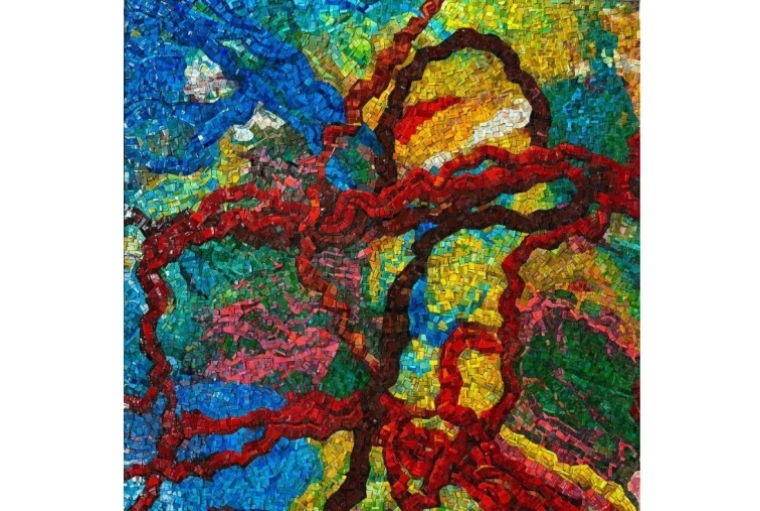
Reverie (2024): Italian glass mosaics
It is ironic then that I discovered the art of Sagarika Sundaram via Instagram, but not surprising as she is based in New York and I in New Delhi. Her elaborate wall reliefs and constructions, made primarily of felt but incorporating other fibers, seem predestined by an art history that has become polysemous, expansive, and libidinous. The referential elasticity of these works illuminates the viewers' perspective: while New Yorkers may read a trajectory that takes us from the stained passages of Helen Frankenthaler to the poured fugues of Lynda Benglis to the syncopated caricatures of Elizabeth Murray, a visitor to Chennai will certainly see the shards of coconut shells, kumkum and haldi powders, Kanchipuram silks, fruits, and flowers encountered at any temple. My own frame of reference finds traces of the women of Punk (Patti Smith, The Slits, Nina Hagen) in Sagarika's audacious iconoclasm and arresting dexterity. And to paraphrase Karen Carpenter: "She's only just begun."
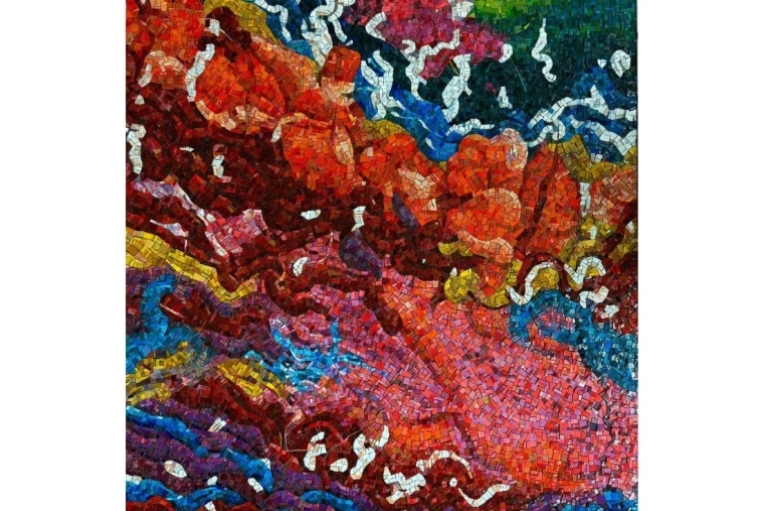
Fugue (2024): Italian glass mosaics
Words Platform Desk
Date 17.01.2025